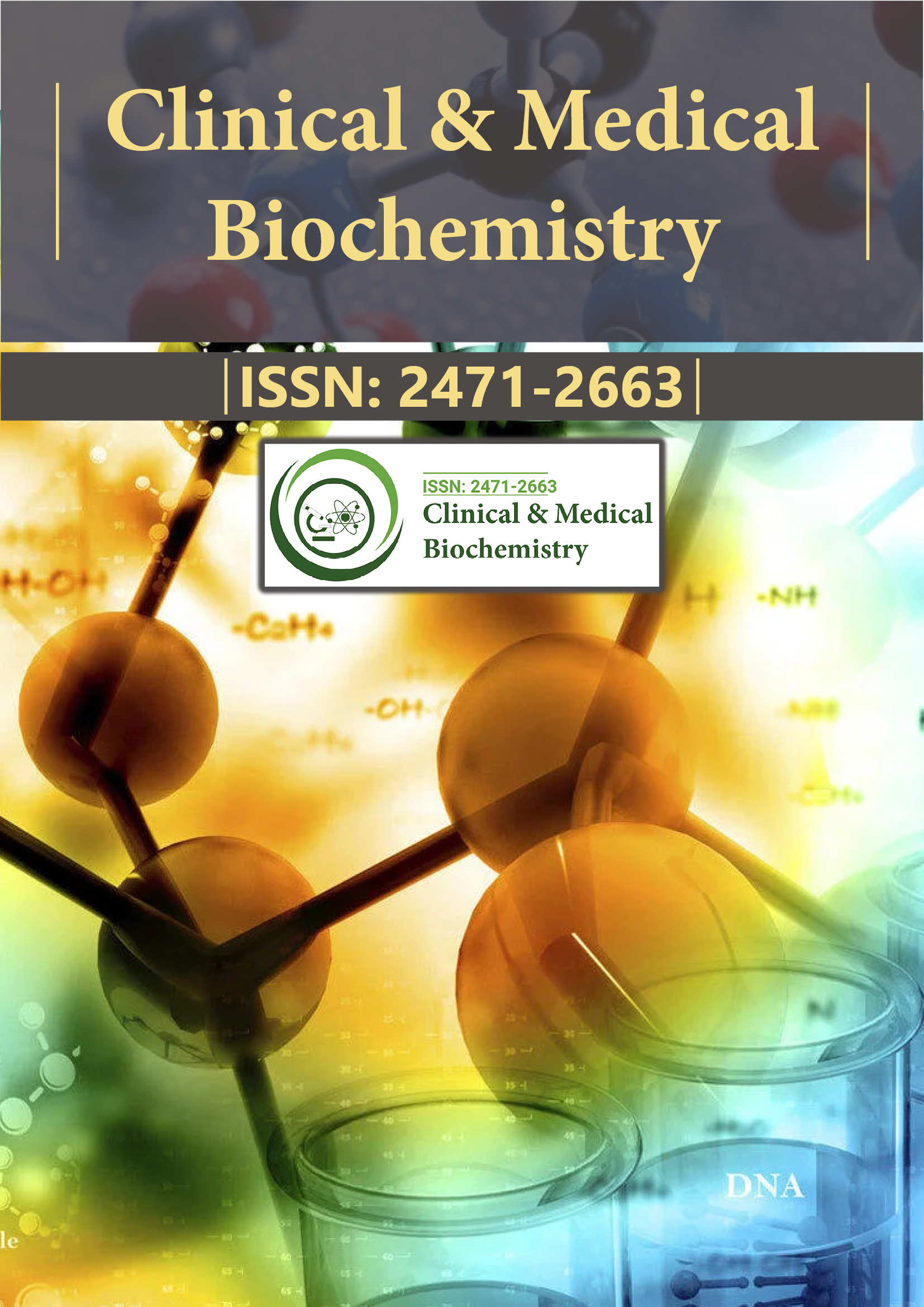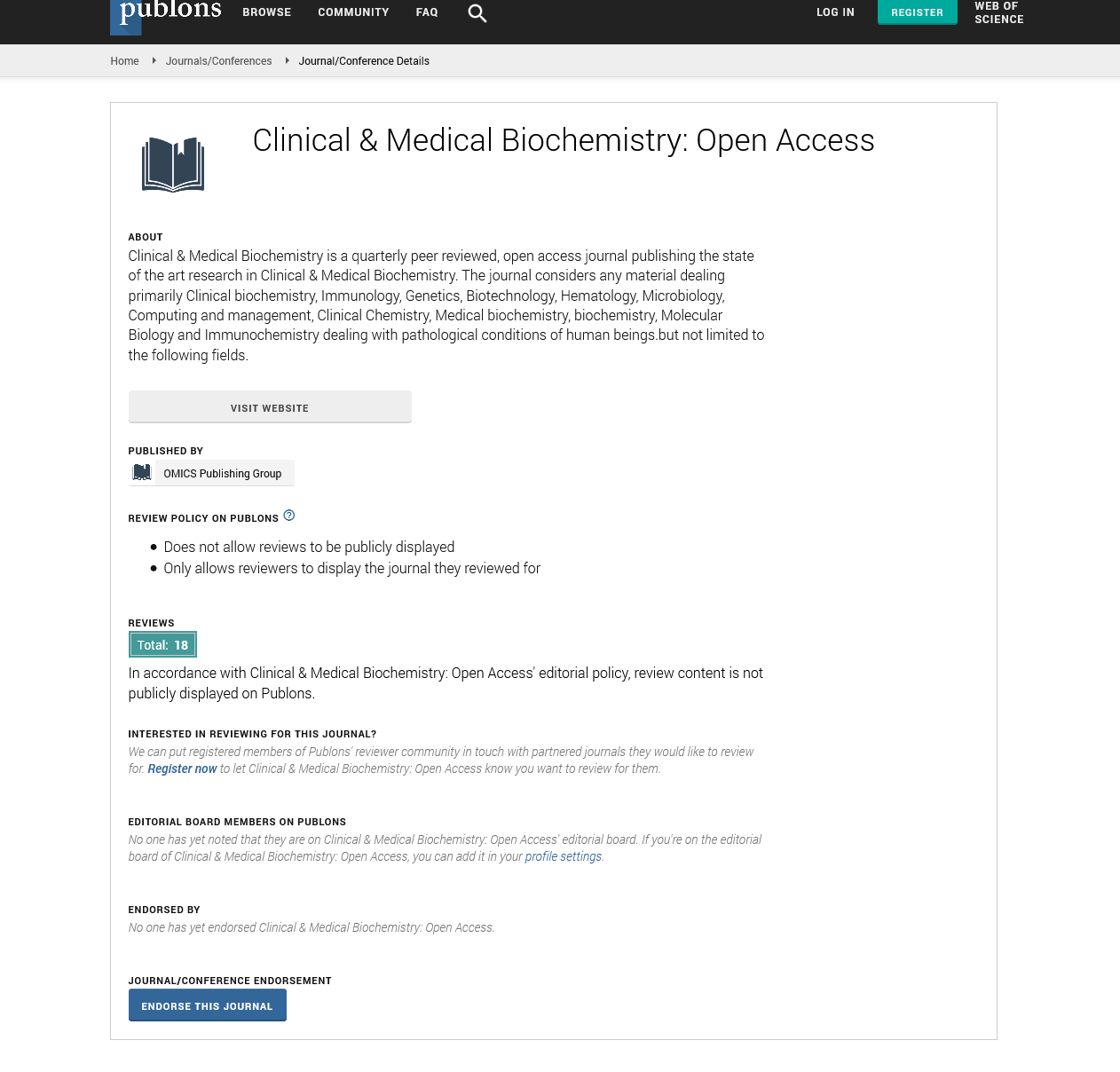Indexed In
- RefSeek
- Directory of Research Journal Indexing (DRJI)
- Hamdard University
- EBSCO A-Z
- OCLC- WorldCat
- Scholarsteer
- Publons
- Euro Pub
- Google Scholar
Useful Links
Share This Page
Journal Flyer

Open Access Journals
- Agri and Aquaculture
- Biochemistry
- Bioinformatics & Systems Biology
- Business & Management
- Chemistry
- Clinical Sciences
- Engineering
- Food & Nutrition
- General Science
- Genetics & Molecular Biology
- Immunology & Microbiology
- Medical Sciences
- Neuroscience & Psychology
- Nursing & Health Care
- Pharmaceutical Sciences
Commentary - (2022) Volume 8, Issue 1
Diabetes and its Treatment by Aqueous Extract of Anacardium Occidentale Leaves
Meng C. Wang*Received: 04-Jan-2022, Manuscript No. CMBO-22-112; Editor assigned: 06-Jan-2022, Pre QC No. CMBO-22-112 (PQ); Reviewed: 20-Jan-2022, QC No. CMBO-22-112; Revised: 24-Jan-2022, Manuscript No. CMBO-22-112 (R); Published: 31-Jan-2022, DOI: 10.35248/2471-2663.22.8.112
Description
The number of people with diabetes (DM) is estimated to increase to 366 million by 2030. Diabetes (DM) is a condition primarily defined by the level of hyperglycemia and leads to a risk of microvascular damage (retinopathy, nephropathy, and neuropathy). This is due to reduced life expectancy, significant prevalence of certain diabetic microvascular complications, increased risk of macrovascular complications (ischemic heart disease, stroke, peripheral vascular disease), and reduced quality of life. If blood sugar levels remain high for an extended period of time (hyperglycemia), this causes long-term damage to organs such as the kidneys, liver, eyes, nerves, heart, and blood vessels. Type 2 diabetes (T2DM) often presents with atherosclerotic dyslipidemia characterized by increased TG, decreased HDLC, and residual cardiovascular risk. Insulin affects many aspects of mammalian lipid metabolism.
Early interventions aimed at normalizing lipid reduce cardiovascular complications and mortality. Many of the drugs currently used to treat DM have side effects. Sulfonylureas stimulate islet cells to secrete insulin, and metformin slows hepatic glucose production. All of these treatments have limited effectiveness and you need to find new herbal compounds that can effectively lower your blood sugar levels.
The anti-diabetic effect of herbal compounds derives from their ability to alter carbohydrate digestion/absorption, stimulate beta cell function, mimic insulin action, and remove reactive oxygen species (ROS).
Diabetes (DM) is a group of metabolic disorders characterized by hyperglycemia due to deficiencies in insulin secretion, insulin action, or both. Chronic hyperglycemia due to diabetes is associated with long-term damage, dysfunction, and dysfunction of various organs, especially the eyes, kidneys, nerves, heart, and blood vessels. Several pathogenic processes are involved in the development of DM. These range from autoimmune destruction of pancreatic beta cells leading to insulin deficiency to abnormalities leading to resistance to the effects of insulin. The basis of abnormal carbohydrate, fat and protein metabolism in DM is a defect in the effect of insulin on target tissues. Defective insulin action results from inadequate insulin secretion and/or decreased tissue response to insulin at one or more of the complex pathways of hormonal action. Impaired insulin secretion and impaired insulin action often coexist in the same patient, and when alone, it is often unclear which abnormality is the major cause of hyperglycemia.
As a tropical plant A. occidentale is indigenous to Brazil, Portugal, India, Southeast Asia and Africa. Extracts of Anacardium occidentale (cashew tree) are used in folk medicine for the treatment of DM, diarrhea, skin diseases, arthritis, fever, aches and pains. This study investigated the effect of aqueous leaf extract of A. occidentale on blood glucose level and lipid profile of diabetic rats. Alloxans have been reported to have non-specific effects on the destruction of the vascular system in other organs other than the pancreas. Accumulation of extrinsic insulin in the blood after destruction of pancreatic cells may be due to impaired renal and liver function. The result of this study is an aqueous extract of occidentale leaves was shown to significantly reduce alloxan-induced metabolic disorders in rats, consistent with previous reports.
Citation: Wang MC (2022) Diabetes and its Treatment by Aqueous Extract of Anacardium occidentale Leaves. Clin Med Bio Chem. 8:112.
Copyright: © 2022 Wang MC. This is an open-access article distributed under the terms of the Creative Commons Attribution License, which permits unrestricted use, distribution, and reproduction in any medium, provided the original author and source are credited.

